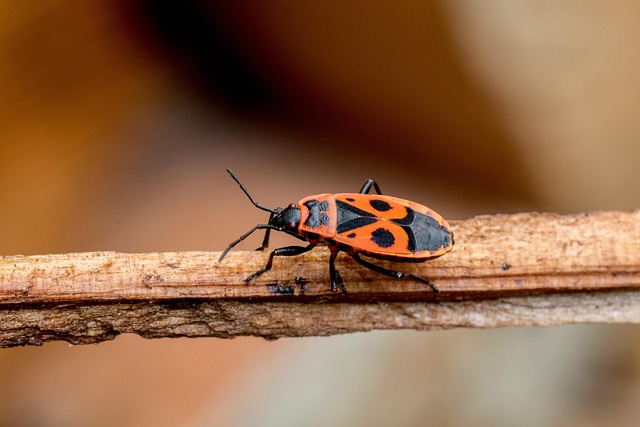Sowbugs, related to centipedes and known for damaging crops and fabrics, thrive in dark, moist environments like basements. Effective sowbug pest control involves eliminating moisture sources, using sticky traps to monitor their movement, and installing physical barriers to block entry points. A proactive approach combining regular cleaning, inspections, and strategic adjustments ensures a successful long-term strategy against these persistent pests.
“Unraveling the secrets of sowbug management, this comprehensive guide explores innovative strategies for effective pest control. Sowbugs, known for their persistent nature, can wreak havoc on lawns and gardens. Understanding their behavior is key to success. We delve into the world of traps and barriers as powerful tools for mitigation. From identifying suitable options like sticky traps and physical barriers to setting up efficient systems, this article covers it all. Learn how to monitor and adjust your strategies for optimal sowbug control, ensuring a lush, pest-free environment.”
Understanding Sowbugs and Their Behavior
Sowbugs are small, wingless insects that belong to the family of centipedes and are often considered a nuisance pest in homes, gardens, and agricultural settings. They get their name from their tendency to move slowly and erratically, resembling the action of sowing seeds. These pests are most active during damp conditions and can cause significant damage to crops, ornamental plants, and stored products by feeding on roots, stems, leaves, and even fabrics. Understanding their behavior is crucial in implementing effective sowbug pest control measures.
Sowbugs have a preference for dark, moist environments, making them common in basements, crawl spaces, and areas with high humidity. They can survive for extended periods without food, which makes them hard to eradicate. To control sowbugs, it’s essential to identify and eliminate their hiding spots and sources of moisture. This includes sealing entry points, improving ventilation, and reducing water accumulation around the property. Additionally, using traps and barriers is a strategic approach to disrupt their movement and limit access to susceptible areas, contributing to successful sowbug pest control.
Common Traps and Barriers for Effective Control
In the quest for effective sowbug pest control, a variety of traps and barriers have proven successful in managing these persistent pests. One common and reliable method is the use of sticky traps, which are highly effective at capturing sowbugs as they move across surfaces. These traps, often made from silicone or synthetic materials, adhere to the insects’ feet, preventing their escape. They are particularly useful for monitoring and controlling populations in hard-to-reach areas like cracks and crevices.
Another popular option is the use of physical barriers such as steel wool or mesh screens. Installing these around entry points and vulnerable areas can effectively prevent sowbugs from gaining access to buildings and structures. These barriers act as a physical line of defense, blocking their passage and reducing the risk of infestation. When combined with regular cleaning and maintenance, traps and barriers form a comprehensive strategy for successful sowbug pest control.
Setting Up and Maintaining Trapping Systems
Monitoring and Adjusting Strategies for Optimal Results
Effective sowbug pest control requires continuous monitoring and strategic adjustments to achieve optimal results. Regular inspections are crucial to identifying high-risk areas and active infestations, enabling timely deployment of traps and barriers. By regularly assessing the environment, you can adjust your strategy based on changing conditions, such as seasonal variations in sowbug behavior or new entry points identified around your property.
Adjustments may include increasing trap placement in problematic zones, trying different types of baits to attract more pests, or relocating barriers to address shifting sowbug patterns. Staying agile and responsive ensures that your control measures remain effective over time, providing a robust defense against these persistent intruders.
Controlling sowbug populations requires a strategic approach, and using traps and barriers is an effective method. By understanding these pests’ behavior, you can deploy common traps and barriers successfully. Setting up and maintaining trapping systems should be done with attention to detail, and regular monitoring will ensure optimal results. With the right strategies in place, it’s possible to manage sowbug infestations effectively, preventing them from becoming persistent pests. Implement these methods for efficient sowbug pest control in your environment.
